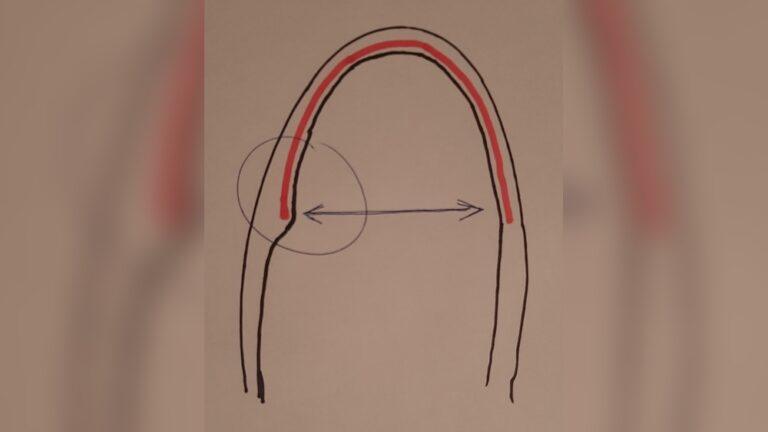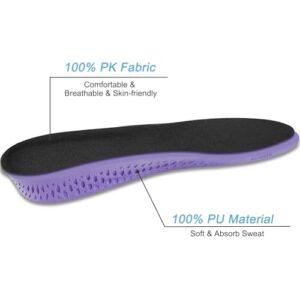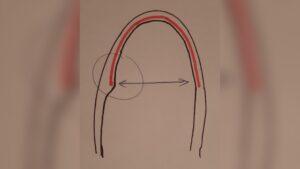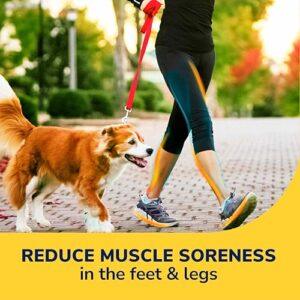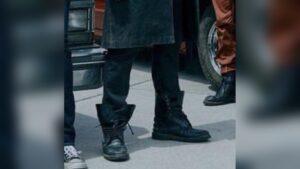Are your steel toe boots feeling too tight and uncomfortable? You’re not alone.
Many people struggle with the stiffness and snug fit of these boots, especially around the toe area. But what if you could make your boots fit better without breaking the bank or buying a new pair? Learning how to stretch steel toe boots can save you time, money, and a lot of discomfort.
In this guide, you’ll discover simple, effective methods to gently expand your boots for a more comfortable fit. Keep reading, and you’ll soon be stepping out with boots that feel just right.
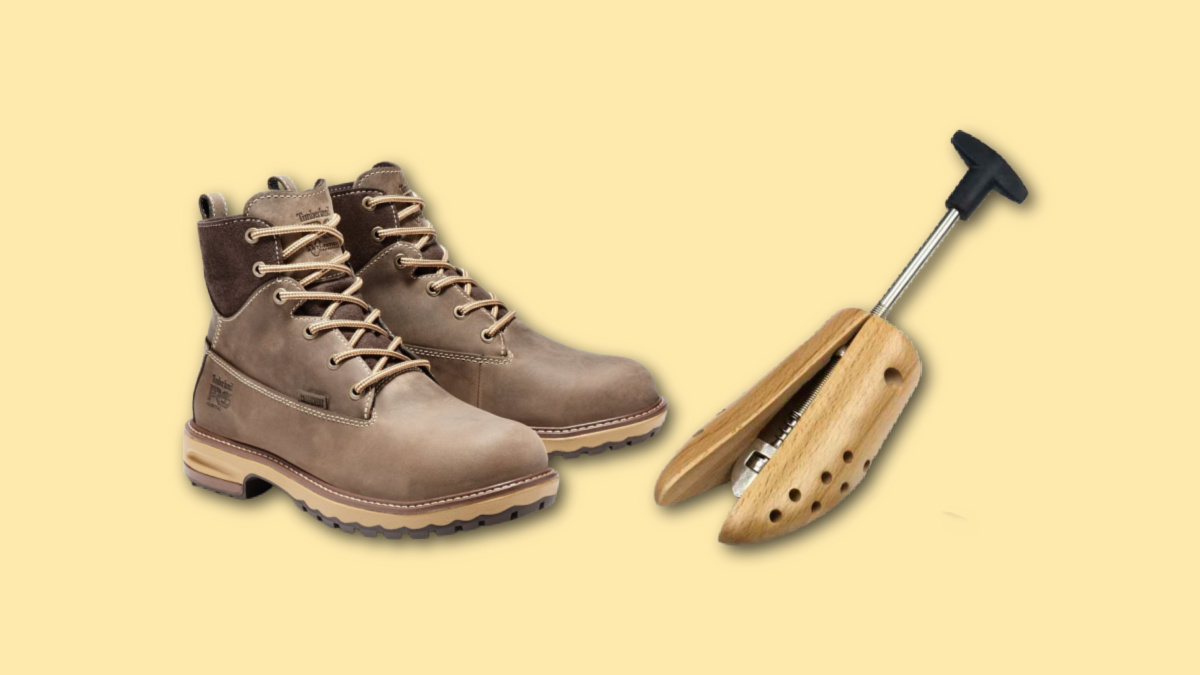
Credit: kdfoundation.org
Choosing The Right Fit
Choosing the right fit is key to stretching steel toe boots successfully. Boots that fit well from the start stretch more comfortably. Ill-fitting boots cause pain and damage. It is important to know your foot measurements and pick the correct size. This step saves time and effort later. The right fit supports your feet and prevents injuries.
Measuring Your Foot Correctly
Measure your feet at the end of the day. Feet swell after walking and standing. Use a ruler or tape measure. Measure the length from heel to longest toe. Then, measure the width at the widest part of your foot. Write down both numbers. Repeat the process for the other foot. Always use the larger measurements for buying boots. This ensures a comfortable fit and room for stretching.
Selecting Suitable Boot Size
Choose boots slightly larger than your foot measurements. Steel toe boots need extra space for toe movement. Select a size that fits snugly but does not pinch. Avoid boots that feel tight or squeeze your toes. Check the width as well as the length. Wide boots are better for broader feet. Try boots on with the socks you plan to wear. Walk around to test comfort and support. A good fit reduces the need for extreme stretching.
Common Causes Of Tightness
Many people find steel toe boots tight and uncomfortable at first. Understanding the common causes of tightness helps to stretch them properly. Tight boots often result from design features and materials used. Knowing these causes makes the stretching process easier and more effective.
Steel Toe Cap Constraints
The steel toe cap is a hard, protective shell inside the boot. It keeps your toes safe from heavy objects. This metal cap does not stretch or bend easily. Because of this, the toe area can feel very tight. The steel toe cap limits how much the boot can expand. Stretching the leather around it may not change the tightness at the toe.
Leather Material Stiffness
Most steel toe boots use thick leather for durability. New leather is stiff and hard to bend. This stiffness causes the boot to feel tight around the foot. Leather softens and stretches with wear and proper care. Without breaking in, the leather stays firm and uncomfortable. Stretching the leather carefully can help loosen it up for a better fit.
Home Stretching Techniques
Steel toe boots can feel tight and uncomfortable at first. Stretching them at home helps improve comfort without needing professional tools. Simple techniques use common household items and a little patience. These home stretching methods work well on leather and soften the boot for a better fit.
Freezer Method With Water Bags
Fill plastic bags with water and seal them tightly. Place the water bags inside the toe area of your boots. Make sure the bags fit snugly without overfilling. Put the boots in the freezer overnight. As the water freezes, it expands and gently stretches the leather. Remove the boots from the freezer and let the ice melt before taking out the bags. This method widens tight areas safely and naturally.
Using Heat To Soften Leather
Heat softens leather, making it easier to stretch. Use a hairdryer to warm the tight spots on your boots. Hold the dryer a few inches away and move it constantly. Avoid overheating or burning the leather. While warm, wear thick socks and put on the boots. Walk around to help the leather mold to your feet. Repeat heating and wearing until the boots feel more comfortable.
Broomstick Or Shoe Stretcher Tools
A broomstick can help stretch boots wider at home. Insert the broomstick across the boot’s opening. Twist gently to stretch the leather. Leave it in place for a few hours or overnight. Shoe stretchers are better for precise stretching. Insert the stretcher into the boot and adjust the width. Keep it inside for several hours to achieve the desired fit. These tools add pressure evenly without damaging the boots.
Professional Stretching Options
Professional stretching options offer a reliable way to make steel toe boots more comfortable. Skilled experts use special tools and techniques to gently stretch the boots. These methods focus on the leather and soft parts, aiming to improve fit without damaging the steel toe. Visiting a professional can save time and reduce the risk of ruining your boots.
What Cobblers Can Do
Cobblers use shoe stretchers designed for work boots. They insert the stretcher inside the boot and carefully widen it. This process targets tight spots in the leather, especially around the toes and sides. Cobblers may also use stretching sprays to soften the leather before stretching. They inspect the boots to find exact pressure points and ensure a precise fit. Their tools can stretch leather well but cannot change the steel toe size.
Limitations Of Steel Toe Stretching
The steel toe cap is made from hard metal and cannot be stretched. Professionals cannot make the steel toe wider or taller. Stretching only affects the surrounding leather and lining. If the steel toe is too tight, the boots may need to be replaced with a larger size. Overstretching leather can weaken the boot’s structure and reduce protection. Professional stretching improves comfort but has clear limits due to the steel component.
Breaking In Your Boots
Breaking in your steel toe boots is an important step to ensure comfort and durability. New boots often feel stiff and tight, especially around the steel toe area. Properly breaking them in softens the material and shapes the boots to your feet. Taking time to break in your boots reduces pain and prevents blisters. The process requires patience and care to avoid damaging the boots.
Gradual Wearing Schedule
Start by wearing your boots for short periods each day. Begin with 30 minutes to 1 hour to let your feet adjust. Slowly increase the wearing time over several days. Avoid wearing them all day at once. This gradual approach helps the leather soften naturally. Your feet will get used to the steel toe protection. Take breaks if you feel discomfort or pressure points. This method prevents soreness and speeds up the breaking-in process.
Using Thick Socks For Comfort
Wear thick, cushioned socks when breaking in your boots. Thick socks add extra padding and reduce friction. They protect your feet from rubbing against the boot’s interior. Choose socks made from soft, breathable material. Wool or cotton blends work well to keep feet dry. Thick socks also help stretch the boots slightly. This simple step improves comfort and fits better over time. Change socks daily to maintain hygiene and freshness.

Credit: www.wikihow.com
Adding Comfort Accessories
Adding comfort accessories is a simple way to improve the fit of steel toe boots. These small additions help reduce pressure and make boots easier to wear for long hours. Comfort accessories can target specific pain points and provide extra cushioning. They also protect your feet from rubbing and blisters. Using the right accessories can make your boots feel broken in without waiting weeks.
Insoles And Cushions
Insoles add a soft layer inside your boots. They absorb shock and reduce foot fatigue. Choose insoles that match your foot shape and arch type. Cushions can be placed in the heel or ball of the foot. This extra padding helps relieve pressure from hard surfaces inside the boot. Gel or foam cushions work best for steel toe boots. Replace old insoles with new ones for better comfort and support.
Moleskin For Pressure Points
Moleskin is a soft fabric that sticks to the inside of boots. It protects areas where steel toes or seams cause rubbing. Cut small patches of moleskin and apply them to spots that feel tight or painful. This creates a smooth barrier that prevents blisters. Moleskin is easy to use and stays in place during long wear. Change patches regularly to keep your feet comfortable and blister-free.
Lacing And Fit Adjustments
Lacing and fit adjustments play a key role in stretching steel toe boots. These boots often feel tight at first. Adjusting the laces can ease pressure and improve comfort. Simple changes to the lacing method help stretch specific areas. This section covers proper lacing techniques and ways to reduce toe pressure for a better fit.
Proper Lacing Techniques
Start by loosening the laces completely before putting on the boots. This gives your foot enough space to slide in without squeezing. Try using a “ladder” lacing style. It creates more room across the top of the foot. Skip eyelets near the tightest spots to reduce pressure. Use straight bar lacing for uniform tightness. Always tighten laces from the bottom up. This method offers better control over fit. Re-lace the boots daily to help stretch them gradually.
Reducing Toe Pressure
Toe pressure causes discomfort and can lead to blisters. To reduce this, try skipping the bottom eyelets. This gives extra space near the toes. Another trick is to use wider, flat laces. They distribute pressure more evenly. Loosen the laces around the toe box area. Avoid pulling laces too tight near your toes. Adding a tongue pad can shift pressure away from the toes. These small changes can make steel toe boots feel less tight and more comfortable.

Credit: www.wikihow.com
Maintenance Tips To Preserve Fit
Maintaining the fit of steel toe boots requires proper care and attention. Without regular upkeep, boots may lose shape or become uncomfortable. Preserving the fit helps extend the life of your boots and keeps them comfortable during long workdays.
Proper maintenance includes cleaning, conditioning, and careful stretching. These steps protect the materials and avoid damage. Follow simple routines to keep your boots fitting well and looking good.
Cleaning And Conditioning Leather
Clean your boots regularly to remove dirt and sweat. Use a soft brush or damp cloth for dirt. Avoid harsh chemicals that dry out leather.
Condition the leather to keep it soft and flexible. Apply a leather conditioner with a clean cloth. Let it absorb fully before wearing the boots again. This prevents cracks and stiffness.
Avoiding Material Damage During Stretching
Stretch boots gently to avoid tearing or weakening materials. Use stretching sprays made for leather to soften the material. Do not force the boots to stretch quickly.
Avoid using heat directly on the steel toe or leather. Heat can warp the steel cap or dry out the leather. Stretch the boots slowly over several days for the best results.
Frequently Asked Questions
How Do I Stop My Steel Toe Boots From Hurting My Toes?
Choose steel toe boots that fit well. Break them in gradually. Use cushioned insoles and wear thick socks. Apply moleskin on sore spots. Adjust lacing to reduce pressure on toes.
How Can I Stretch Out My Work Boots?
Fill sealed plastic bags with water, place them in boots’ toe area, and freeze overnight. The expanding ice stretches leather gently. Repeat if needed.
Can A Cobbler Widen Steel Toe Boots?
A cobbler cannot widen the steel toe cap itself, as it is rigid metal. They can only stretch the leather around it.
How Can I Stretch My Boots Wider At Home?
Fill sealable plastic bags with water, place them in boots, and freeze overnight to gently stretch leather. Use a boot stretcher or wear thick socks while heating boots to expand width safely.
Conclusion
Stretching steel toe boots takes patience and care. Use safe methods like wearing thick socks or using boot stretchers. Avoid forcing the steel toe cap as it cannot expand much. Keep your boots dry and clean during the process. Small steps help improve comfort without damage.
Properly stretched boots protect your feet and last longer. Enjoy a better fit and safer workdays with these tips.

Madison Clark is a footwear expert and the voice behind MyStyleGrid.com. She specializes in honest shoe reviews, style tips, and practical guides to help readers find the perfect pair for any occasion. With years of experience in blogging and content creation, Madison makes footwear knowledge simple, stylish, and easy to follow.

